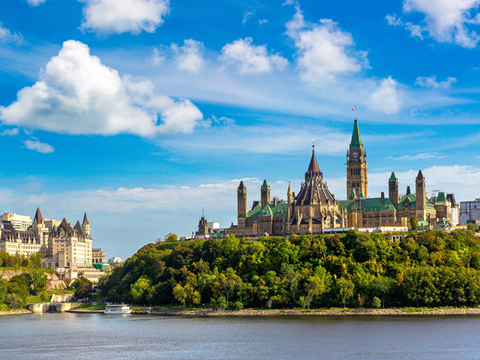
Today marks the start of the latest step on the journey towards the creation of the United Nations’ legally binding treaty on plastic pollution – INC-4. To find out more about what that journey has looked like up to now, plus what we can expect from the event, we spoke with Erin Simon, Vice President and Head of Plastic Waste and Business at WWF – who is in attendance.
I think it would be useful to set the scene – what has the INC/UN Plastic Treaty process looked like up until this point? What has been determined and where are we currently at?
In March of 2022, UN Member States unanimously agreed to negotiate a treaty by the end of 2024. Since then, global leaders have gathered at three INC meetings to hammer out the details of what will become the final draft of the treaty later in 2024.
The first two meetings were largely procedural but ahead of INC3 in Nairobi, a ‘zero draft’ of the treaty was produced. This version was negotiated last November, and on Tuesday, the 4th session of negotiations will kick off in Ottawa. While this process can be challenging, it holds the key to shaping a future free of plastic pollution.
And how would you reflect on the progress that has been made during this process thus far? Are there any specific positive or negative aspects that you’d like to pick out?
I am still hopeful – because while this process will never be fast enough for what the planet needs, to deliver a global agreement within three years – if we can do it – will be an impressive feat.
Since the negotiations started, there have certainly been a number of challenges, from countries slowing down the negotiations, to a lack of intersessional work between INC3 and INC4 – but what remains promising is the vast majority of countries agreeing, we can’t let this opportunity slip by.
Let’s look ahead to INC-4 now – what’s going to be happening at the summit, and what are some of the key things you’ll be looking out for?
INC-4 is a pivotal moment in the treaty’s development— it’s going to be our last best chance to get this done. Countries need to seize this opportunity.
I’ll be watching where the discussions go around key provisions of the text, including the phasing out of problematic plastics and tackling chemicals of concern. I’ll also be closely tracking discussions around mechanisms of implementation – because this treaty is only going to be successful if it can be implemented in all countries.
What do you think the likely outcomes of INC-4 will be, and how does that compare with your hopes/ideal scenarios?
At the end of INC-4, if we walk away with agreed text on key control measures and obligations, including bans, product design and financing, a mandate for the Chair to produce a new, updated zero draft before INC5, and an agreement by all countries for formal intersessional work to take place between INC-4 and INC-5, then we will be in a place where the negotiators are setting us up for success in November.
Once the process has been fully completed, what do you think the eventual Treaty will look like?
WWF has been clear on what a good treaty looks like – it must include global bans on the most harmful and avoidable high risk plastic products, it must include global product design requirements that ensure the remaining products can be easily and safely reused and recycled and there must be a strong financial mechanism in place to support a just transition. This is the treaty people and the planet need. I’m hopeful we can get there.
If you could send a message to the key stakeholders/decisionmakers – what would it be?
Don’t delay. There’s a lot of momentum and support for taking action to solve our plastic pollution crisis. Rather than focus on our differences, let’s build bridges, agree on the key measures, and deliver a treaty that can help us make change at a speed and scale that matters.











No comments yet